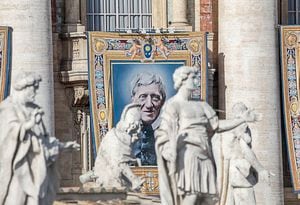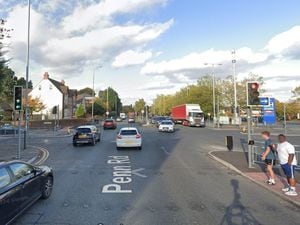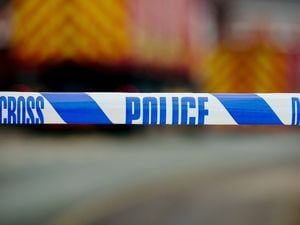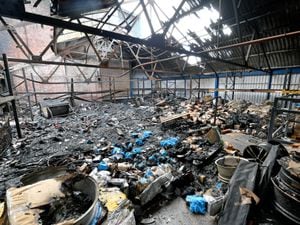How an Anglican priest became a Catholic saint
From tending to the sick during a cholera outbreak in the 19th century Black Country to healing an expectant mother in modern-day Chicago, John Henry Newman has left an indelible impression on the Catholic Church.

And the one-time temporary assistant priest in the West Midlands this week became Britain’s newest saint.
In front of tens of thousands of pilgrims at St Peter’s Square in the Vatican, the Pope Francis elevated the English theologian to sainthood.
The Prince of Wales, who represented the UK at the ceremony, praised the legacy of the cardinal, saying in a speech after the ceremony, saying it was a cause for celebration Anglicans, Catholics and simple admirers of Newman.
“He was a priest, a poet and a thinker ahead of his time,” said the Prince. “Above all, perhaps, he was a fearless defender of truth, whose impact on the world was as profound as it is enduring.”
John Henry Newman was born in London 1801, and in 1849 he founded the Birmingham Oratory. In August that year the region suffered a dreadful cholera epidemic.
Father Craig Fullard, of the Newman Clusters of Catholic churches in the Black Country, says that while he was registered as assistant priest at Holy Trinity Church in Bilston, he in fact only served there for 48 hours.
Cheers
“During the cholera outbreak there was a call for priests to come and help, and although he wasn’t very well at the time, Newman volunteered to come,” says Father Fullard.
“During his time in Bilston he ministered to the sick. Newman visited Bilston during the second cholera outbreak and his love of God and the poor was central to his life and work and that’s why he is a saint also.”
More than 200 worshippers turned out to Holy Trinity Church to listen to the service, and cheers went up when Newman was declared a saint.
Father Fullard adds: “Some people there could have had great, great grandparents who were ministered to by Newman. We are very proud of our association with him.”
But although Newman eventually became a towering figure in the Roman Catholic church, this was not always the case. As a young Anglican priest he was a fierce critic of the Catholic church, and the Pope in particular, before beginning to question his Protestant beliefs in his 40s.
In February 1843, Newman published, as an advertisement in the Oxford Conservative Journal, an anonymous retraction of all the things he had said against Catholicism, and two years later he caused no little controversy when he announced he had converted to the Catholic Church.
Newman went on to establish a congregation called the Birmingham Oratory in 1849, where he lived a secluded life for nearly 40 years.
Late in Newman’s life, Pope Leo XIII made him a cardinal, and he died in Birmingham in 1890. His remains lie in a closed stone coffin at the Oratory.
The Catholic Bishop of Shrewsbury, Rt Rev Mark Davies, describes Newman as ‘a saint very close to us.’
“He saw the beginnings of our Shrewsbury Diocese, and foresaw many of the challenges we face today,” he says.
Stirring
“In speaking of a ‘second spring’ for the Catholic Church in this land, Newman looked to the future of our diocese declaring that the name of Shrewsbury would prove ‘as stirring to the heart as the glories England had lost’ and he spoke of the saints who would rise from this diocese.”
However, it is much more recent events that led to John Henry Newman being canonised. The Vatican must authenticate two miracles to declare someone a saint, and Newman has been credited with curing a man’s spinal disease and a woman’s unstoppable bleeding.
In 2000, Jack Sullivan, from Boston, Massachusetts, had completed the second year of a four-year course to become a Catholic deacon when he was struck by crippling back pain.
“I certainly needed a divine favour at that moment, so I prayed: ‘Please Cardinal Newman help me to walk so that I can return to classes and be ordained’,” he said.
When he awoke the next morning, the pain had gone, allowing him to complete his third year of classes before the pain returned, on the final day of the academic year.
Then, in May 2013, expectant mother Melissa Villalobos from Chicago was suffering from unstoppable internal bleeding that threatened the life of the child in her womb.
According to the Birmingham Oratory: “In prayer she directly and explicitly invoked Newman’s intercession to stop the bleeding,” it said. “The miraculous healing was immediate, complete, and permanent.”
Mrs Villalobos had become aware of Newman after watching a television programme about him in 2000. Then in 2013 she began experiencing complications while expecting her fifth child.
“It was a life-threatening problem because I could haemorrhage to death,” she said.
On the morning of May 15, Less than a week after being diagnosed with the condition, Villalobos woke up in a pool of her own blood.
Venerable
After collapsing on the floor of her bathroom, she considered shouting to her children for help, but was concerned that the strain of doing so would cause a miscarriage. She cried out: “Please Cardinal Newman, make the bleeding stop,” and says the bleeding stopped immediately.
“I stood up and I smelled roses that filled the bathroom air,” she says.
The process leading to sainthood cannot begin until at least five years after the candidate’s death and involves scrutinising evidence of their holiness and work.
First, the individual is declared a ‘servant of God’, and is then called “venerable”
The next stage is Beatification, where an individual is declared blessed after a miracle is attributed to them, followed by canonisation, where a sainthood is bestowed after a second Vatican-authenticated miracle.
Father Guy Nicholls, of Birmingham Oratory, says the priests of Bilston showed selfless courage as they ministered to the sick during the cholera epidemic, often putting their own lives in danger.
“When the parish priest of Bilston, Father Michael Crewe, found the sheer task too great for himself and fell ill as a result, he managed to get the help of Father John Sherlock, who took temporary charge.
“Father Sherlock also distinguished himself by his selfless devotion, and carried the sick to hospital on his back. But the sheer scale of the task was too great, and sickness affected him as well, which is hardly surprising since the priests were in constant physical contact with severely sick people.”
Indeed, Father Crewe was so severely affected by the illness that he died the following year, aged just 30.





